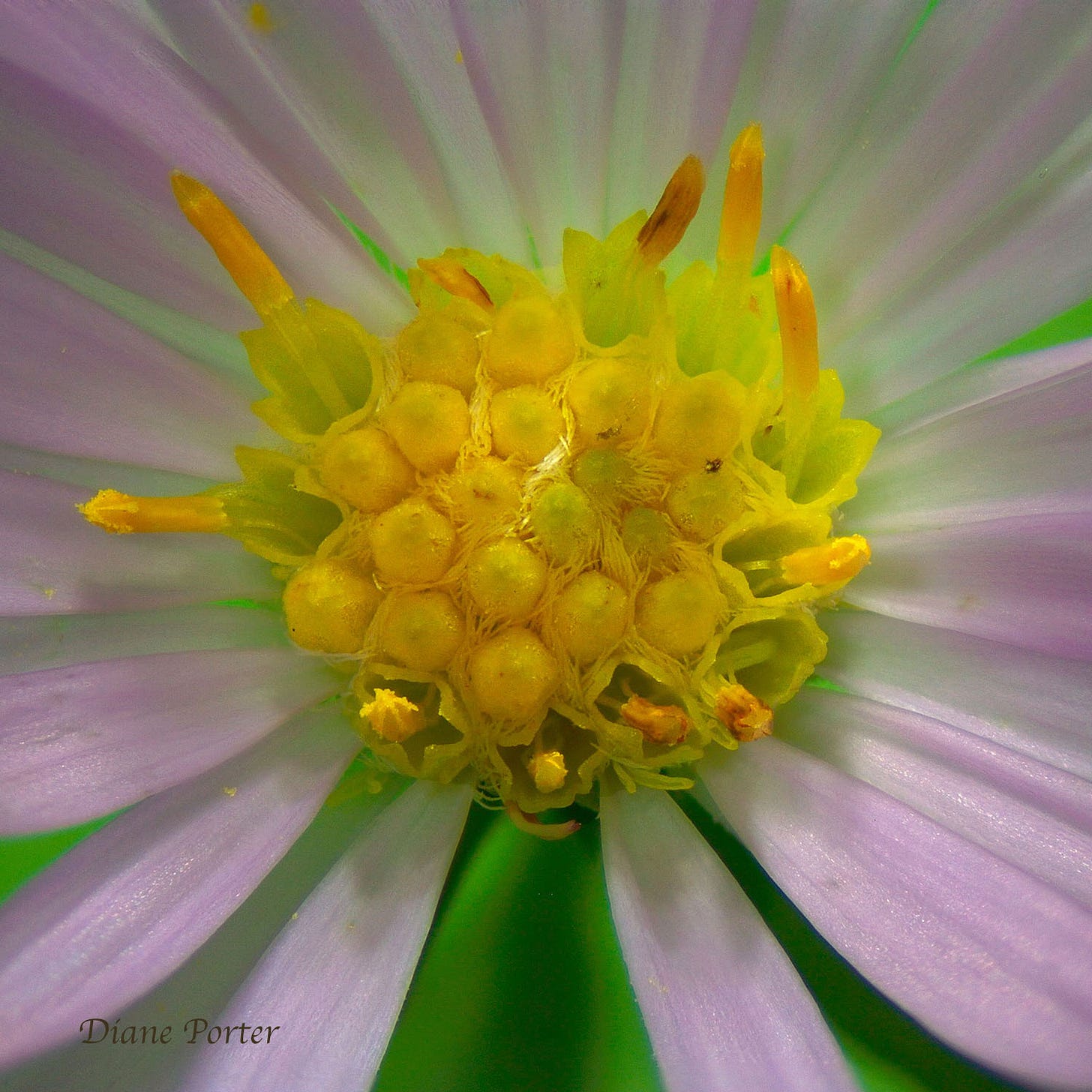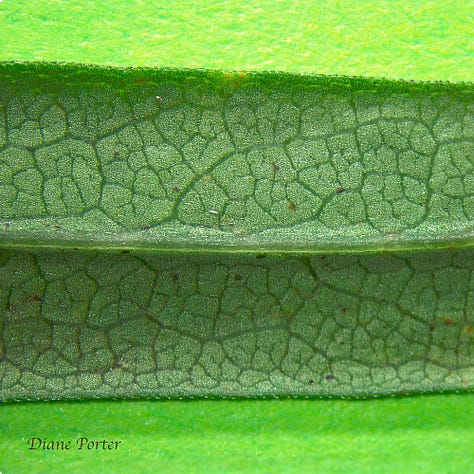

Discover more from My Gaia
If I indulge my fantasy, I imagine asters as sentient beings, each with its own personality. If that were the case, then Willow Asters would be aristocrats, with their subtle lavender petals, slender leaves, and graceful poses.
If she were a lady, she would host gracious, elegant parties by a lake. Suitors would long for her attention.
There are indeed beings who visit her every hour of the day. She is always attended by bees, butterflies, and myriad other insects.



As in other asters, each Willow Aster flowerhead looks like a daisy, with petals that radiate out from a central disk. It looks like a single flower. Actually it is a composite of 30-or-so individual, miniature flowers, called florets, all bound together like a bouquet.

The central disk looks yellow when the flowerhead opens, turning brownish red as it matures. With the help of a microscope, the individual florets appear. At first they are closed, like buds (which is what they are). As they open and get pollenated, they darken.
Identifying Willow Aster
Some asters are a little challenging to name, because the identifying field marks are small. However, Willow Asters are easy.
All of her leaves are long and slender. Even at the base of the plant, where some other asters have wider leaves, those of Willow Aster are narrow.
And there’s a neat trick that clinches the ID on this flower. It takes magnification. You need an inexpensive 10-power loupe, a magnifier that fits in your pocket.



Pick a leaf from a Willow Aster, and look at its lower surface through the magnifier. Suddenly you see the vein structure of the leaf.
The leaf’s veins divide the space into small, regular, closed areas. Like a net. The leaf is described as reticulated — which means like a net. It’s the trademark of Willow Aster. This is reason enough for me to carry my loupe with me always during aster blooming season.
Where to find Willow Aster
Willow Aster is not rare where I live, in southeast Iowa. If you walk in grassy fields, especially in a damp areas, you may find her blooming profusely.
Willow Aster native range map
It’s fairly widespread in central and eastern North America.

Fall is when asters of many species bloom. Now’s the time!
I have to end now, because I need to go outside and admire the asters.













Thanks for letting me republish this beautiful essay.
https://www.bleedingheartland.com/2024/10/30/iowa-wildflower-wednesday-willow-aster/
This post makes me wonder whether I have seen this plant and mistakenly ID'ed it as sky-blue aster or smooth blue aster.